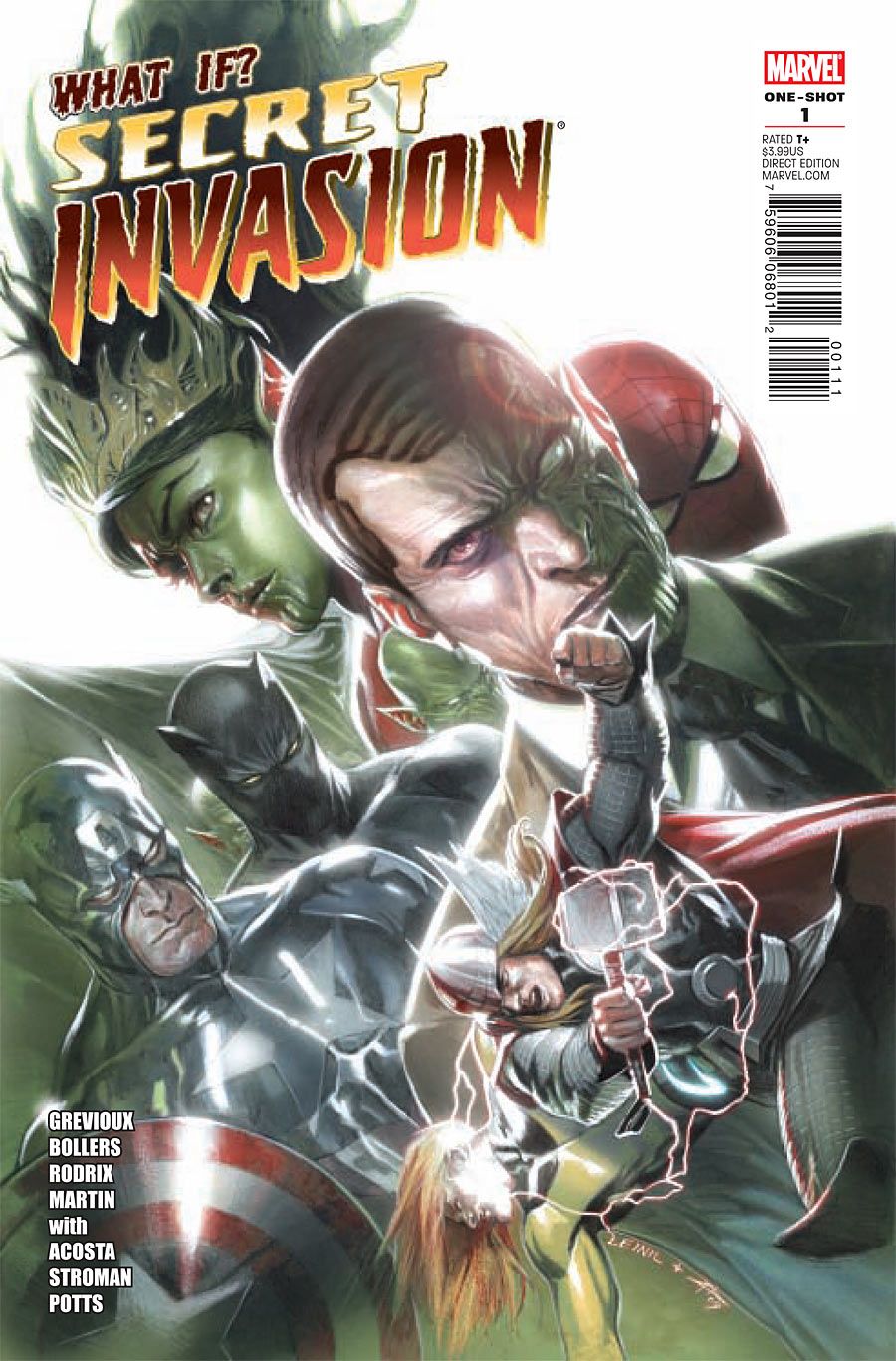When "Secret Invasion" ended, many argued that the resolution of Norman Osborn being put in charge of S.H.I.E.L.D. (only for it to become H.A.M.M.E.R.) was out of step with the mood of the audience, so why should the "What If?" issue devoted to the event be any different? Where the original felt too dark and cynical after Barack Obama's election for many, this "What If?" issue feels out of place for an audience that is clearly tired of Norman Osborn being at the center of every comic they read. The past year has had Osborn in the majority of Marvel titles, making everyone rather sick of him and, yet, despite his relatively minor role in "Secret Invasion" prior to the final issue, the character is, again, front and center in both of the stories that make up this issue, only one of which actually makes for a somewhat decent read.
The lead story, "What if the Skrulls succeeded in their secret invasion?" takes a smart approach by beginning on the one-year anniversary of the Skrull victory and life is good. Crime and disease are unknown, people undergo conversion treatments to introduce Skrull genetics to their system to obtain shapeshifting powers that help them live longer, and the only non-Skrull country on the planet is Wakanda, where the rebellion, consisting of various heroes, operates. In a last-ditch effort to get rid of the Skrulls, they're developing a virus that will destroy Skrull DNA without, hopefully, killing any converted humans.
Some of the twists that have happened over the past year, like Tony Stark descending into an alcoholic daze, make sense, while others -- Norman Osborn as the Queen's consort or the group of heroes that have given up the fight -- aren't explained well enough for them to make sense. Sadly, the idea that the rebellious heroes are wrong is barely touched upon since the world does seem utopian, so more discussion of if they're actually doing the right thing would have been appropriate. The resolution to the story, though, is good and takes advantage of this being a "What If?" story, unafraid to put characters in places they would never be in the regular comics.
The second story, which is only 12 pages long, asks "What if the secret invasion remained secret?" and is far weaker than the lead story despite having a strong hook. It hinges on a question that many readers asked at the time, but provides few answers, instead telling a mundane and entirely boring story involving Norman Osborn suspecting something isn't right with the world (because if there's one man in the Marvel universe that is tune with reality, it's Norman Osborn). As a result, the story dodges the question and offers little perspective on the resulting actions of a true secret invasion.
Artistically, Pow Rodrix and Frank Martin's art on the lead story is generic and unimpressive. As the preview pages show, it's not bad, but the compositions and figure work are mediocre, not standing out in any way. It's serviceable art that doesn't get in the way of the story, but also doesn't add to it. Larry Stroman's work on the second story is stronger, working with the darker mood, but also doesn't impress, often looking incomplete or rushed, particularly during the fight scene.
At the end of the issue is a four-page "Say What?" back-up feature that is meant to be a humorous play on this issue's focus, "Secret Invasion," but is more a cutesy series of gags that aren't actually funny. Unless the idea of a Skrull version of Reed Richards having allergies causes you to laugh yourself silly, of course.
Overall, the first of this year's batch of "What If?" titles is disappointing in its focus on Norman Osborn, a character who was only important at the end of "Secret Invasion," it lack of imagination, and its generic, dull art.

